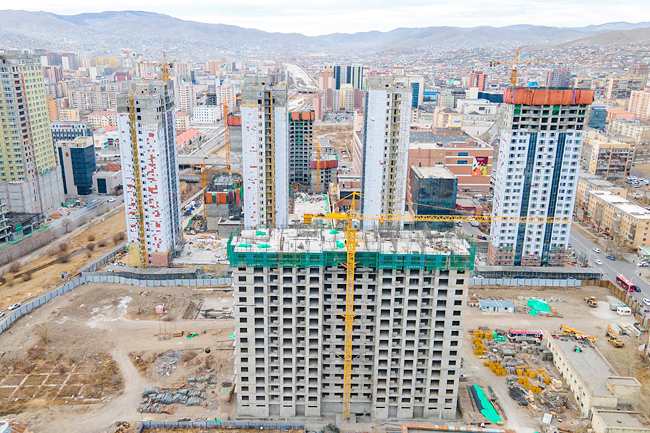ULAANBAATAR (AFP) – Otgoo recalls running around freely as a child in Mongolia’s once sparsely populated capital city, but he fears a rapid construction boom has now trapped his children in a concrete jungle.
Across Ulaanbaatar, high-rises are replacing the yurts that Mongolians have called home, symbols of a nomadic life that is fading away. Locals said the construction boom, fuelled by mining windfall – is squeezing out room for much-needed public services, from new hospitals to children’s playgrounds.
“When I was a child I spent all day outside,” said Otgoo. “We used to play football, running like a wolf or rabbit in big empty spaces. My kids can’t run like us. All places are filled with new apartment buildings.”
Mongolia’s mining boom drove double-digit growth, with vast profits from coal making up a quarter of the country’s gross domestic product in 2022.
The industry has sparked a wave of demand for office space and luxury apartments in Ulaanbaatar. The haphazard and rapid mushrooming of the capital city – its population growing from half a million in the 1990s to roughly two million in 2022 – has also led to massive daily traffic jams, trapping people in often hours-long commutes to and from work.
The boom, however, has largely not included vital civic infrastructure, leaving many children growing up without outdoor recreational facilities, parents told AFP. There is little room for bigger playgrounds, schools and hospitals, many of which were built under Communist rule more than 30 years ago. “My kids’ only chance to play outside is on the weekend,” said a mother of three Ulzii. “They stay home and watch screens.”

Just a stone’s throw from Parliament, the Shangri-La hotel – which boasts impressive views and hundreds of rooms priced well out of reach of the average Mongolian – was built on land once intended to be occupied by a children’s amusement park.
Existing civic services such as schools and kindergartens are stretched to their limit, with an average of 50 to 60 children crowding into each classroom.
Experts blame antiquated city planning strategies for the poor management of public spaces.
“There were urban plans before the boom but they weren’t smart,” an urban governance expert Anu-Ujin Lkhagvasuren, told AFP.
“Places once meant to build garbage dumps have now turned into the most expensive residential areas”. Ulaanbaatar “basically copied” Soviet-style plans that placed workspaces far from residential districts, she said. The policy was meant, in part, to pull working-class people out of inner-city slums and into better-managed suburban communities.
“Workplaces are now centred around the main square and that causes traffic jams.”
Some are pushing back: in the face of protests, the city’s mayor in 2021 announced a ban on construction permits for new buildings, with the exception of schools, until 2040. That ban does not, however, cover already-approved projects, meaning construction crews are still hard at work all over the city. “When the country became democratic in 1990 Mongolians travelled abroad, and when they saw megacities like New York or Singapore, they wanted shiny skyscrapers and built the same ones here,” an investment banker Achit-Erdene Darambazar, told AFP.
In a country where poverty remains stagnant, some believe the construction boom is emblematic of larger issues – specifically alleged corruption by public officials.
“We’re asking each other: ‘Where did the mining export income go?'” Achit-Erdene said. “The answer is the construction boom.”
Last year, a Chief Executive Officer of a large state-owned coal export company was placed under investigation for embezzlement, with the country’s anti-corruption authority saying many of the looted funds went into real estate.
“Corrupt officials buy apartments instead of holding cash in their account or in their home,” said a councillor representing Bayanzurkh, one of the Mongolian capital’s largest districts Battsetseg Dorjlkhagva.
Battsetseg led protests for a year against a high-rise office project, ultimately leading to the works being cancelled. Now, a kindergarten is being built in its place. “We don’t need tall buildings anymore,” she told AFP.






